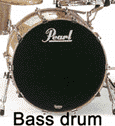Spain, Holland See Unity As Key To World Cup Final
Holland championed unity as the key to Sunday's World Cup final battle while Germany's impressive collection of young talent set out their stall for the 2014 title by clinching third place.
Spain coach Vicente del Bosque believes victory at Johannesburg's Soccer City can strike a blow for national cohesion, a day after a million people marched in northeastern Spain in support of Catalan autonomy."There are players from all over Spain here in the squad, we are united and I hope the same feeling of unity occurs back in Spain," said Del Bosque.
"I think sport does many good things and I hope football could lead to better relations in our country."
Barcelona supplied seven of the starting line-up when Spain beat Germany in the semi-finals with that figure likely to be replicated when del Bosque's stylish side look to add a first world title to their European crown.
Dutch skipper Giovanni van Bronckhorst also stressed the significance of team spirit as he confirmed there had been none of the tensions between players that have hampered Holland's chances of success at previous tournaments.
"I think the spirit in the camp has been extremely important," said Feyenoord star van Bronckhorst, who will retire after Sunday's final.
"As players you have to spend six or seven weeks together to achieve your goal and I believe, if the atmosphere is good off the pitch, it will be good on it - you will go that extra mile for a team mate."
It has not always been like that for the Dutch, whose chances of success on the international stage have been frequently sabotaged by squabbling.
Factional in-fighting was as much a part of life for the "total football" generation of the 1970s as it was in the Ruud Gullit/Marco van Basten era of the late 80s, and reached its nadir when racial faultlines in the squad were exposed at Euro 96.
In Port Elizabeth on Saturday, Sami Khedira's 82nd-minute header earned Germany a 3-2 victory over Uruguay in a rousing and rain-soaked third-place play-off.
The Stuttgart midfielder rose to nod the ball beyond Fernando Muslera, while Diego Forlan was inches away from a dramatic equaliser with an injury-time free-kick that struck the crossbar.
Forlan rounded off an impressive individual showing at the tournament with a brilliantly-taken volley to give Uruguay a 2-1 lead early in the second period, only for Marcell Jansen to restore parity moments later.
"Of course we had all hoped for something better, but this match for third place was also a final that we absolutely wanted to win," said Khedira.
"At this World Cup we were a very young team and we've put down a marker. But we obviously want to win more in the future."
Thomas Mueller had put Germany in front in the 19th minute, but Edinson Cavani drew Uruguay level in the 28th.
Mueller and Forlan's goals took them level with Spain's David Villa and Dutch midfielder Wesley Sneijder in the race for the Golden Boot with five strikes apiece.
Miroslav Klose's hopes of matching Ronaldo's record of 15 World Cup finals goals were dashed after a back injury saw him relegated to the German bench by coach Joachim Loew.
 Tom-tom
terdiri atas berbagai macam ukuran baik dalam kedalamannya dan
diameternya. Ukuran suatu drum biasnya ditulis 12x10 yang maksudnya
adalah kedalamannya 12 inchi dan diameternya 10 inchi. Diameter tom-tom
bervariasi, biasanya tom-tom paling kecil berdiameter 6", dan berlanjut
ke 8", 10", 12", 13", 14", 15", 16", 18" dan 20". Ukuran tom-tom 14"
keatas dapat digolongkan sebagai floor tom-tom, tetapi tergantung dari
peletakannya juga. Tom-tom menggunakan 2 drumhead, atas dan bawah,
kecuali pada tahun 70-an dimana tom-dan bass drum hanya menggunakan 1
drumhead saja, dan suaranya jelek sekali. Badan tom-tom atau yang biasa
disebut dengan shell terbuat dari kayu. Untuk drum kelas pemula biasanya
menggunakan kayu Mahogany dan untuk kelas professional biasanya
menggunakan kayu Birch dan Maple. Kayu Birch dan Maple lebih mahal
karena menghasilkan suara atau tone yang bulat dan jernih. Kayu pada
tom-tom biasanya mempunyai ketebalan dari 4 sampai 10 mm. Semakin tipis
kayu maka suara yang dihasilkan semakin kaya dan sensitive. Sedangkan
semakin tebal kayu suara yang dihasilkan semakin keras, tetapi suaranya
tidak terlalu kaya dan kurang sensitive.
Tom-tom
terdiri atas berbagai macam ukuran baik dalam kedalamannya dan
diameternya. Ukuran suatu drum biasnya ditulis 12x10 yang maksudnya
adalah kedalamannya 12 inchi dan diameternya 10 inchi. Diameter tom-tom
bervariasi, biasanya tom-tom paling kecil berdiameter 6", dan berlanjut
ke 8", 10", 12", 13", 14", 15", 16", 18" dan 20". Ukuran tom-tom 14"
keatas dapat digolongkan sebagai floor tom-tom, tetapi tergantung dari
peletakannya juga. Tom-tom menggunakan 2 drumhead, atas dan bawah,
kecuali pada tahun 70-an dimana tom-dan bass drum hanya menggunakan 1
drumhead saja, dan suaranya jelek sekali. Badan tom-tom atau yang biasa
disebut dengan shell terbuat dari kayu. Untuk drum kelas pemula biasanya
menggunakan kayu Mahogany dan untuk kelas professional biasanya
menggunakan kayu Birch dan Maple. Kayu Birch dan Maple lebih mahal
karena menghasilkan suara atau tone yang bulat dan jernih. Kayu pada
tom-tom biasanya mempunyai ketebalan dari 4 sampai 10 mm. Semakin tipis
kayu maka suara yang dihasilkan semakin kaya dan sensitive. Sedangkan
semakin tebal kayu suara yang dihasilkan semakin keras, tetapi suaranya
tidak terlalu kaya dan kurang sensitive. Bass drum
tidak terlalu berbeda dengan tom-tom, hanya bass drum mempunyai diameter
yang lebih besar, 16", 18", 20", 22", 24" dan bahkan 26" atau lebih.
Dan bass drum dipukul dengan menggunakan pedal dan ditaruh dibawah.
Tetapi suara bass drum tidak seperti tom-tom yang bersuara "Dung..."
tetapi cenderung bersuara "Dug..." (lebih mati suaranya). Kayu bass drum
cenderung lebih tebal untuk menghasilkan suara yang lebih keras dan
untuk ketahanan drum itu sendiri.
Bass drum
tidak terlalu berbeda dengan tom-tom, hanya bass drum mempunyai diameter
yang lebih besar, 16", 18", 20", 22", 24" dan bahkan 26" atau lebih.
Dan bass drum dipukul dengan menggunakan pedal dan ditaruh dibawah.
Tetapi suara bass drum tidak seperti tom-tom yang bersuara "Dung..."
tetapi cenderung bersuara "Dug..." (lebih mati suaranya). Kayu bass drum
cenderung lebih tebal untuk menghasilkan suara yang lebih keras dan
untuk ketahanan drum itu sendiri. Snare drum
adalah drum yang paling berbeda diantara lainnya (dari bentuk dan
suaranya). Dan snare drum merupakan unsur utama dari drumset (yang
paling sering dipukul). Drum ini biasanya berukuran 10" sampai 15",
tetapi yang paling biasa digunakan adalah ukuran 14". Yang membuat
perbedaan pada snare drum yaitu pada bagian bawah drum tersebut. Di
bawahnya menggunakan kawat-kawat yang berbentuk spiral atau yang
sebenarnya dinamakan Snare Wire /Strainer. Benda itulah yang membuat
perbedaan pada snare drum. Jika anda memukul head atasnya maka snare
wire dibawah segera merespon, dengan cara 'memukul' kembali head bawah
dan menghasilkan suara yang tajam. Maka dari itu, sebenarnya 'nyawa'
dari snare drum terletak pada snare wirenya. Jika snare wirenya dilepas
maka suara yang dihasilkan hampir sama dengan tom-tom.
Snare drum
adalah drum yang paling berbeda diantara lainnya (dari bentuk dan
suaranya). Dan snare drum merupakan unsur utama dari drumset (yang
paling sering dipukul). Drum ini biasanya berukuran 10" sampai 15",
tetapi yang paling biasa digunakan adalah ukuran 14". Yang membuat
perbedaan pada snare drum yaitu pada bagian bawah drum tersebut. Di
bawahnya menggunakan kawat-kawat yang berbentuk spiral atau yang
sebenarnya dinamakan Snare Wire /Strainer. Benda itulah yang membuat
perbedaan pada snare drum. Jika anda memukul head atasnya maka snare
wire dibawah segera merespon, dengan cara 'memukul' kembali head bawah
dan menghasilkan suara yang tajam. Maka dari itu, sebenarnya 'nyawa'
dari snare drum terletak pada snare wirenya. Jika snare wirenya dilepas
maka suara yang dihasilkan hampir sama dengan tom-tom. Cymbal,
lagi-lagi merupakan 'nyawa' bagi drumset, karena hampir tidak mungkin
bermain drum tanpa cymbal (ibaratnya seperti makan nasi tanpa nasi,
nggak makan donk...). Cymbal terdiri atas 4 jenis mereka yaitu:
Cymbal,
lagi-lagi merupakan 'nyawa' bagi drumset, karena hampir tidak mungkin
bermain drum tanpa cymbal (ibaratnya seperti makan nasi tanpa nasi,
nggak makan donk...). Cymbal terdiri atas 4 jenis mereka yaitu: